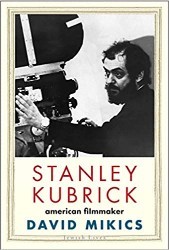The turbulent lives of Saul Bellow’s friends and family are filled with jealousy, treachery, fame and poetry, but despite their drama and historical impact, they are little-known outside of academic English departments. Fortunately, in Bellow’s People, David Mikics condenses an introductory survey course into a few hundred pages.
Familiarity with Bellow’s writing will help readers find and enjoy Bellow’s People, but isn’t required for comprehension. Mikics’s book is much more a collection of biographical essays about literati than a work of literary criticism. Rather than focus on the originality and genius of Bellow’s voice, Mikics fills the pages instead with fragmentary quotes of the author and his acquaintances’ idiosyncratic, natural speech. Mikics’s interest in Yiddish and the subtle way Bellow saturated his work with it deserves special note — and perhaps its own study — but it does not occupy a major place in these stories.
The tour is roughly chronological, following the order of Bellow’s novels from The Adventures of Augie March to Ravelstein, blending summary with biographical accounts of the bases of the characters in Bellow’s life. Some of Bellow’s people, like the novelist Ralph Ellison, never figured into his literature, but Mikics traces their impact on Bellow’s work convincingly. Bellow himself emerges as one of his own most interesting people, figuring as the model for the hero in many of his novels and a marker of his evolving idea of heroism, a sort of extended Shakespearian debate with himself as he matures about the absurdity of life.
The organization is sometimes awkward, as when Mikics emphatically ascribes personality traits to real people in the course of summarizing and drawing parallels between Bellow’s fiction well before those people appear in anecdotes. We’re reminded of the fury Saul’s brother Maury inherited from their furious father before any scene of outrage is introduced.
Mikics’s main critical argument that Bellow’s literary innovation is to make raw realism an uplifting comedic enterprise is undercut by the focus on Bellow’s chronic descent into bitterness and jealousy. Mikics is probably correct, but look to the novels for the comedy. Like Bellow, Mikics allows precise descriptions of his subjects’ antics to speak for themselves with very little editorializing. Each real-life episode (the infidelity and collapse of Bellow’s first marriage; his rebound remarriage to an ex-girlfriend of Philip Roth) reveals a depth of character vivid enough for fiction.
Mikics’s constant task is instead to situate the people in history and the voices in their literary contexts, comparing and contrasting everything in the style of an example collegiate essay. The book is academic for a popular audience, but it makes an approachable and rewarding course. Over the course of his own lifetime, Bellow preserved countless larger-than-life personalities in raw but masterful portraits of their lives in motion; Mikics couldn’t possibly approach the same task in these slim biographies, but he manages with a similar spirit to capture the epic scope of Bellow’s effort.
Related Content:
- Saul Bellow Reading List
- David Albahari: The Voice
- Boris Fishman: Bernard Malamud at 60: The Wrong Writer for Our Age





